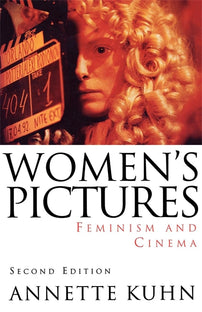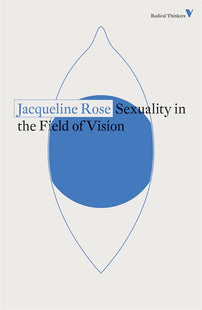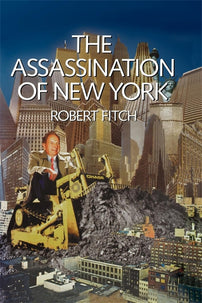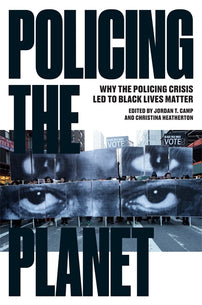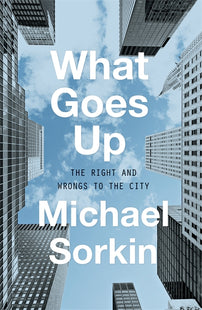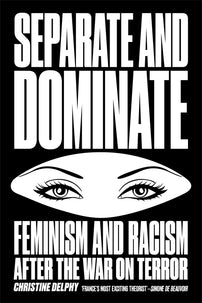Mourning and Mannahatta
In the Cut cannily moves its counter across a board whose rules have been laid down by Freudian psychoanalysis, Propp’s analysis of folk tales, and film theory’s obsession with the B-movie and noir.

"Cinema is a rape machine," Sophie Mayer writes in the introduction to From Rape to Resistance: Taking Back the Screen, a new collection of her occasional writings on film. "That’s what I said to journalist Amelia Abraham earlier this year; I will keep saying it until someone makes the T-shirt. My mission, as a feminist film critic, curator and activist, is to put a spanner in those works until they break — or I do."
From Rape to Resistance includes the previously unpublished essay below, which circles around Jane Campion's 2003 In the Cut. To order the book in PDF form, send £5 via Paypal to ms [dot] sophiemayer [at] gmail [dot] com.
There are many stories told about going down into death. From Orpheus in the underworld to Sigmund Freud’s “Mourning and Melancholia,” these stories tell us about how the living — the loving — have journeyed into Hades; about why, despite our longing, the dead must stay dead; and how, having lost Eurydice a second time on the dark stair (or cathected the lost object, in Freud’s terms), we can return to the light.
If anywhere has needed its own version of that story in recent times, it’s New York. On September 11, 2001, New York became, metonymically, the iconic image of massacres and disasters everywhere. And so New York was where I came to journey into death and to return, following the footsteps of a cinematic Orpheus: Franny, the protagonist of Jane Campion’s In the Cut, adapted from Susanna Moore’s controversial 1997 novel. Franny is a professor of creative writing and a writer, as I am; perhaps that’s why I was so attracted to her path. She lives in an apartment full of words and reflected light off Washington Square, spending time with her half-sister Pauline but is otherwise alone, afraid of intimacy. It’s difficult not to read Franny as a figure of New York: first spiky, assertive, intellectual, and alienated; then haunted, vulnerable, and defensive after she witnesses the prelude of a murder that causes the state to invade her privacy, and then to enter her intimate life.
In the Cut was the first film to be granted permission to shoot in Manhattan after 9/11, after the shoot was delayed from winter 2001 to summer 2002. This is no abstraction: the film pairs the protagonist’s loss/danger and the city’s. As Franny journeys through the city, she is often shot from a high angle, as she descends and then ascends stairs. These shots are balanced by multiple cut-aways to ostentatious low-angled shots, saluting the Stars and Stripes on flagpoles and the sides of buildings. Midway through the film, Franny leaves the college where she teaches creative writing and walks past a wall covered in wreaths for, and photographs of, the missing of Ground Zero.
Moving through the stages of melancholia and into mourning, she also moves through the city, touching the points at which it has, historically, been vulnerable. This essay attempts to chart those points, as a reading of the film made through a journey on foot and by Metro, through the landscape of grief mapped by Campion and her cinematographer Dion Beebe. It starts where the novel ends, with Franny’s death at the lighthouse on Jeffrey’s Hook at 181st Street on the Hudson River, and ends where the film ends, with Franny’s return from the lighthouse to her apartment off Washington Square. In between, it follows the paths that Franny might have taken, the life/film that may have flashed before her eyes, through the city whom she figures and which may be dreaming itself through her.
As Judith Butler does in her beautiful book Precarious Life, the film rewrites Freud’s essay to suggest how New York might have moved through its grief, not through retributive violence but through the vulnerability of desire. Franny, through a desiring relationship with the man she suspects of being the killer, has to learn that “we’re undone by each other. . . and if we’re not, we’re missing something.”
1. To the Lighthouse
Please have no fear, you’re in no harm
As long as you’re here in my arms
But you can’t leave so please don’t try…
Willie Nelson, “I Can’t Let You Say Goodbye”
I have come to the site of a murder. At the very edge of the island, it stands between the elephantine thighs of the bridge. Off Broadway, down 181st, past the apartment building with the fallout shelter I have come.
I have been led here by three guides, too real to be the phantasms they seem: the guy on the Jersey bus with the Ash Wednesday cross on his head; the businessman who leaked a trail of candy from his bag down the steps of the George Washington Bridge to the New York bus stop; and the construction worker standing on the lookout at the bottom of 181st, as if waiting for me. He points. I follow. Over the footbridge across the Henry Hudson Parkway. Through the underpass into unmarked drifts. Midday treebranch shadows fall like bruises on the pristine skin of the snow. Every sense is crying out “Beware.” But I skid onwards, breathless and jumpy, until I see what I have come to see, what cannot be seen until you are almost upon it.
The red of the lighthouse against the dead white of the snow beneath the brilliant blue of the sky. After five years of tracing cinematic routes through cities, happening upon locations and entering them, I realise that — for the first time — I am afraid. Why have I come to this monument with blood on its hands? By making it the location for a series of brutal femicides, Susanna Moore subverts — perverts — the beloved Little Red Lighthouse, which was saved from decommissioning by a cutesome children’s book that turned it into the classic American hero: plucky underdog, staunch defender. But a lighthouse is always a monument to murder: those that it anticipates and averts, those that came before and warranted its presence. It dreams of death, a lightning-rod for disaster. A lighthouse is always both warning and weapon.
And so scarlet. The winter sunlight intensifies the carmine alarm. Erect, red: the lighthouse is the classic phallus, sign of male power and anxiety. After all, it’s unmanned. And on the move. As well as popping up as a drawing on Franny’s chalkboard when she’s teaching To the Lighthouse, it signals twice, as a souvenir model, from the desk of the 8th Precinct’s Officer Rodriguez, who says that he fishes at the lighthouse. Rodriguez is played by Nick Damici, formerly Harvey Keitel’s personal trainer, and subsequently embroiled in the macho worlds of CSI:NY, World Trade Center, and the US remake of Life on Mars. The hypermasculine Rodriguez is, in the film’s parlance, a “house mouse,” an officer relieved of active duty and of his piece (he carries a water pistol instead: how’s that for phallic anxiety), after he beat his wife because she threw out his Officer of the Year trophy.
The film is licking its lips as it has its Freudian cake and eating it: there’s plenty of references to the sexually proactive Franny as Medusa, and Sue Gillett has brilliantly re-articulated the scattered elements of the Medusa myth in the film, connecting them to Rapunzel and other hairy tales of female sexuality. The film cannily moves its counter across a board whose rules have been laid down by Freudian psychoanalysis, Propp’s analysis of folk tales, and film theory’s obsession with the B-movie and noir. But Rodriguez’s lighthouse fetish conceals a deeper truth. When Franny comes to the precinct, he picks up a miniature guitar and sings a few lines of the song that will play over the end credits, Willie Nelson’s “I Just Can’t Let You Say Goodbye,” a haunting murder ballad in which a man loves a woman to death. Franny doesn’t catch the inference. By then, she is already in the embrace of murder, romancing Rodriguez’s partner Malloy, whom she suspects of killing and beheading Angela Sands.
Malloy and Rodriguez, homicide detectives, are likewise “much possessed by death,” as TS Eliot said of John Webster. Not least, it would seem, because the 8th precinct, where they work, no longer exists. From 1929 to 1958, the 8th precinct policed the area bounded to the west by Sixth Avenue, north by 14th Street, east by 3rd Avenue, south by East Houston and Spring Street, including Washington Square, where Franny lives. By locating her detectives in a ghost precinct where a model of the lighthouse issues its siren call, Campion seems to imply that the hardnosed homicide cops, uniformed heroes of 9/11, are themselves trapped in death. Death only withdraws when Franny resignifies the lighthouse — first by connecting it to Woolf’s novel where only one elderly woman dies, of natural causes, and secondly when, to seduce Malloy, Franny sheaths herself in a red dress and unsheathes her red lipstick, the classic attributes of the femme fatale.
When the lighthouse looms into Franny’s vision, just a few minutes later, as Rodriguez turns away from the George Washington Bridge (last exit from Manhattan), it’s the first time that the film has given us a clear sign — literally, a clearly legible road sign, and then a landmark. For a New York film, In the Cut is oddly cagey, only delivering the jouissance of recognisable location, the money shot of place, in the prefigured figure of the red lighthouse glowing against the Hudson on a rainy night.
What the film refuses to show, the absent phallus for which the lighthouse is the fetish, is what it cannot show, although it’s signalled everywhere: not just in the red of the lighthouse’s warning signal, but in the camera’s instruction, every time it catches an American flag, to look up. From the northwestern edge of the island, where Franny confronted the killer, my eye is drawn south along the shore of the Hudson to the forest of skyscrapers downtown. The eye notes the shore’s sandy beaches held together by twisting trees, last vestige of Mannahatta, “that word nested in nests of water-bays,” as Walt Whitman says of the city’s Lenape name in his eponymous poem. The forests in which the Lenape hunted are gone. The sailships and steamships that Whitman saw, and that the lighthouse protected/tempted, are gone. And at the tip of the island, the Twin Towers are gone.
I look towards the site of a massacre.
2. Broadway
Midway along the journey of our life
I awoke to find myself in a dark wood,
For I had wandered off from the straight path.
Dante Alighieri, Divine Comedy
I have come to the site of a massacre.
For Franny to reach her apartment after she flees the lighthouse, she would have had to walk down the Henry Hudson Parkway (an impossibility: there’s no sidewalk, and the road ends on the lip of a cliff tumbling down to the river) or walk almost the entire length of Broadway, the famously diagonal path that bisects Manhattan, and crosses close to Washington Square. If you look down Broadway, what you (don’t) see is (the ghost of) the Twin Towers.
It’s the oldest north-south thoroughfare on the island, and was already in existence when the Dutch arrived; the Dutch explorer and entrepreneur David de Vries gives the first mention of it in his journal for the year 1642. Russell Shorto, author of The Island at the Center of the World, transliterates the Lenape name for the path as the Wickquasgeck Trail. Like Dante, so they thought, the Dutch found themselves in a dark wood, one they set about clear-cutting to build a European settlement. To destroy the forest was to destroy the Lenapes’ lifeway. The Dutch (and English) brought with them that old story, the northern European fairytale of the savagery and monstrosity of the forest, to the wooded coasts of the Americas, and their nightmares led them to strip bare the woods in their war on terror. It’s this loss that haunts the film, doubling the fall of the tree-like Twin Towers. Its first shot is a hazy, dreamy glimpse across the Brooklyn naval yards to the forest of Manhattan, an echo of the opening of Manhatta, the 1929 city symphony that celebrates the ascending modernist city by incorporating quotations from Whitman’s poem “Mannahatta” that sees, in the steel buildings, a new form of the indigenous forest.
In the Cut does not celebrate the glass-and-steel city. It mourns, not nostalgically, for the loss of a world, following that glimpse of Manhattan with a dazzling shot of a petal shower in a garden of spring trees, whose vivid energy is recalled, and connected to the feminine principle, when Detective Malloy reads one of Franny’s favourite quotations, from the Japanese poet Aruma: “I want to do with you / What spring does with the cherry trees.” Franny quotes Samuel Taylor Coleridge to her half-sister Pauline, celebrating the animism that “of this busy human heart aweary / Worships the spirit of unconscious life / In tree or wild-flower.”
In the cherry trees, the film reseeds Mannahatta, paralleling, subtly, Franny’s precarious survival with that of indigenous America, while the masculine energy of the city (embodied in the lighthouse and the killer) is paralleled with the Dutch. The monsters that they pursued came from their unconscious, which they located in the dark, in the underground, where Franny reads a series of Poetry in Transit placards from Lorca’s “thicket of kisses” to Dante’s dark wood, as articulations of her desire and warning signs against it.
I look towards the site of death.
3. Underground
It’s off in the distance.
It came into the room.
It’s here in the circle.
Seneca Indian song
I have come to the site of death, having climbed the steep hill up to 181st and Broadway. I’m out of breath, soaked to the skin from snow drifts, and grey clouds are tarnishing the blue sky. I can’t imagine that Franny walked, shoeless, the almost length of Broadway to her apartment (9.6 miles, according to Google Maps). Instead, I recall what Orpheus is told in Hades: that by travelling a bleak path underground he will arrive back home, hundreds of miles away from the site where he descended into the underworld.
I take the subway. It’s no coincidence that the final Poem in Transit is the translation of a song collected from the Seneca, one of the indigenous nations of New York state, leaders of the Haudenosaunee Confederacy. And it’s no coincidence that the indigenous presence in the film is confined to the subway, the city’s subconscious, the place New Yorkers love to fear. In the film, it’s a world as overdetermined, as slow in motion, as the realm of Death in Jean Cocteau’s Orphée: Franny collects cryptic fragments of street slang, perhaps in homage to Orphée’s Surrealist car radio. When she awakes at the lighthouse, it is from the dream of a figure we have seen earlier in the film, on a subway platform as Franny passed by on a train. It’s one of the most striking and hallucinatory images in the film, yet also utterly socially real: an African-American wedding party, the bride in an effervescent white dress at odds with the sorrow in her eyes. A Eurydice if there ever was.
Folklorist A. H. Gayton notes that “tales of the recovery of a beloved person from the land of the dead are common in North American mythology. They have been variously referred to… as Orpheus Myth[s].” These are recorded very early, before extensive European contact, and are particularly common along both coasts, often featuring water as an obstacle and — as in the Greek version — challenging the protagonist to find a means of transport to the land of the dead. Travelling on the subway five times, Franny spends much of the film literally underground on this journey; aboveground, she is often found in shadowy apartments, or the ghost precinct, or the basement of a seedy bar: the deathly locations of neo-noir. She is travelling not in search of her wife, but her mother (and of herself as bride-to-be). Franny lovingly tells the story of her parents’ romantic engagement on an iced-over pond, a story that changes in the sepia-toned flashbacks to become one of horrific violence. Eventually, Franny tells us that her mother “just about died of grief” when Franny’s father abandoned her.
When Franny looks at the bride on the subway, she sees a palimpsest of her mother, Pauline’s mother, and their daughters. Neither Franny nor her half-sister Pauline have married, although Pauline longs to, to compensate for the fact that their father never married her mother. The shot reminds us that, until the Victorian era, white was worn at funerals. In the Graeco-Roman world, the bride wore red. Franny sees, implicitly, that women just about die of grief in traditional marriages (Eurydice and Alcestis both die on their wedding days; Persephone/Kore is taken to Hades to marry). The black Eurydice (a nod, perhaps, to Marcel Camus’ 1959 film Orfeu Negro) asks what it means to be wedded to grief and to understanding violence as love. Dwelling in the city’s subconscious, this figure of love and celebration becomes a figure of mourning – and of warning, offering Franny a cautionary tale and a way out, if only she can find an ascent to balance her desire for the underground, the dingy rooms, the night. The Seneca version of the Orpheus myth, Gayton notes, “gives the tale one of its rare happy endings.”
As Elisabeth Bronfen writes, in my favourite reading of the film, “Campion suggests that waking up and walking into the dawn of morning might just as well mean preserving the dialectic between night/day rather than insisting on a violent repression of the nocturnal side of the psyche. It might well mean focusing on the partial darkness [that] inevitably accompan[ies] all hopes and anticipations connected to love, on the partial light illuminating all sense of vulnerability and anxiety.” She crowns Franny a Queen of the Night, a woman possessed with the magical ability to reconcile the dangers of desire and darkness with living in the light. She’s like Demeter, who left the land of the dead and restored — for a season — spring’s fertility to the world.
I look towards the site of possibility.
4. Washington Square
Que sera sera
Whatever will be will be
The future’s not ours to see
“Que sera sera,” Jay Livingston and Ray Evans
I have come to the site of possibility, ascending from the subway at West 4th Street/Washington Square on the A (Franny uses 8th Street/NYU).
What I see is four-square patriarchal America: grand brownstones, university buildings, police surveillance vans. I see shaded windows, a closed face turned away from the city. I think of Henry James’ novel Washington Square (adapted several times to film), in which an overbearing father prevents his daughter’s marriage. Franny tells Malloy that her father abandoned her, as a teenager, in a hotel room in Geneva while he flew to Washington on business. Washington, the George Washington Bridge, Washington Square: the Law of the (Founding) Father. Is New York, then, the abandoned mother, almost dead from grief? Both bridge and square acquired their name because in 1870 Washington camped on the north of the island, while waiting to meet Clinton’s army. His name is a trace of the nation in a city that is often cast as separated from it by its liberalism and multiculturalism; in other words, by its vulnerability to the outside world, to the Other.
The square and the bridge are points of vulnerability that siren aloud their martial name and association with the Father. According to Wikipedia, “following the September 11th attacks on New York and Washington, the Port Authority prohibited people from taking photographs on the premises of the bridge because of the fear that terrorist groups might study any potential photographs in order to plot a terrorist attack on the bridge… [On holidays and memorial days], the bridge sports the largest free-flying American flag in the world; 90 feet long and 60 feet wide, the flag weighs 450 pounds.” The square’s triumphal arch was locked after Marcel Duchamp’s 1917 declaration of the “Free and Independent Republic of Washington Square,” and it is one of the most surveilled sites in the world, becoming, in 1997, the first place in the US to have video surveillance cameras installed. As Evan Moore notes, “Security is so significant in the park that it has a very noticeable physical presence.”
Yet the extensive security — which now includes overhead drones — provided no safety for Angela Sands, whose head was dumped in the gardens, starting the film’s femicide trail, or for Franny. As Robin Morgan describes in The Demon Lover: The Roots of Terrorism, women experience sexual terror(ism) everyday, while the state, if not actively enforcing it, is complicit in allowing it to continue. Yet women are also subjected to constant surveillance under the guise of security, in order to police their sexual behaviour. In the film, there are frequent point-of-view shots that imply someone watching Franny in the rearview mirror of a car, calling to mind the police surveillance vans that surround the park. Security/stalking. It’s a thin line, and the film never clarifies who is watching Franny: her lover Malloy, or the killer.
The Homeland Security Act could be said to feminise America, turning on all individuals the gaze that has historically fallen on women. Susan Faludi makes it clear in her profound study The Terror Dream that the US, under the guise of a “protective” foreign policy and even espousing feminism, is a serial killer, a murderer acting out the anxiety of being unmanned by the events of 9/11. In her guise as Demeter, Franny suggests another way, a sub-way of grief that has been almost forgotten. Demeter’s female initiates performed her mysteries at Eleusis, just outside Athens — their female power being unacceptable within the boundaries of a city where they could not be citizens, and were in fact veiled and in purdah. They carried out rituals of civic mourning (echoed by the tradition of professional keeners in many Mediterranean countries), grieving for the dead and reincorporating them into civic life as beloved memory. The Eleusinian mysteries, which were deeply related to the Orphic, allowed the city to mourn: that is, to move on, to accept the reality of death. To accept that even the most powerful city-state can be undone, is always vulnerable.
Franny returns to Washington Square, which was a potter’s field (a paupers’ graveyard) long before it became a tony neighbourhood. Her slow walk through the garden circles back to the beginning of the film, and — in her magical transit from river to freeway to downtown — recalls the final sequence of Maya Deren’s 1942 short film Meshes of the Afternoon, in which a woman’s feet step, across straight cuts, from shoreline to garden to house. New York’s alternative culture, in which Deren played a key role in the 1950s, its resistance to the state power signified by Washington, offers Franny — and the viewer — the Woolfian room of one’s own. Jennifer Reeves makes the same move for the agoraphobic female protagonist (also a writer) of The Time We Killed, her intense and absorbing re-vision of Rear Window (away from sadism, towards self-realisation) in post-9/11 New York. Reeves’ protagonist finds, in her femininity and queer sexuality, an alternative to the melancholia that led Orpheus away from the world and towards death. Alone in her room, she rebuilds her world towards the vulnerability of desire.
In the final shot of Campion’s film, Franny’s door swings closed, denying the camera’s surveilling eye, and creating a space of (Eleusinian) mystery: returning the word for the film’s genre to its originary sacred meaning. Mystery comes from muein, to close — often used of the eyes. To close one’s eyes is a radical act in cinema, especially in a thriller, which relies on an unblinking gaze at violent crimes, and on final clarity and reassurance. Yet, as China Forbes whisper-sings over the opening and closing credits, the future’s not ours to see. This is the vulnerability that mourning, finally, admits. For all the signs and psychoanalytic symbols, for all we’ve read the fairytales and seen the disaster movies, studied Mannahatta and Virginia Woolf, learned the city map and memorised the subway lines; for all our surveillance cameras and lighthouses, we cannot see beyond the present or stop what’s coming. Que sera sera. The city — changed — lives on.
Sophie Mayer is a writer and activist. Her most recent book is Political Animals: The New Feminist Cinema (IB Tauris, 2015), and she works with queer feminist film curation collective Club des Femmes, and with Raising Films, a campaign and community for parents and carers in the UK film and television industries.

